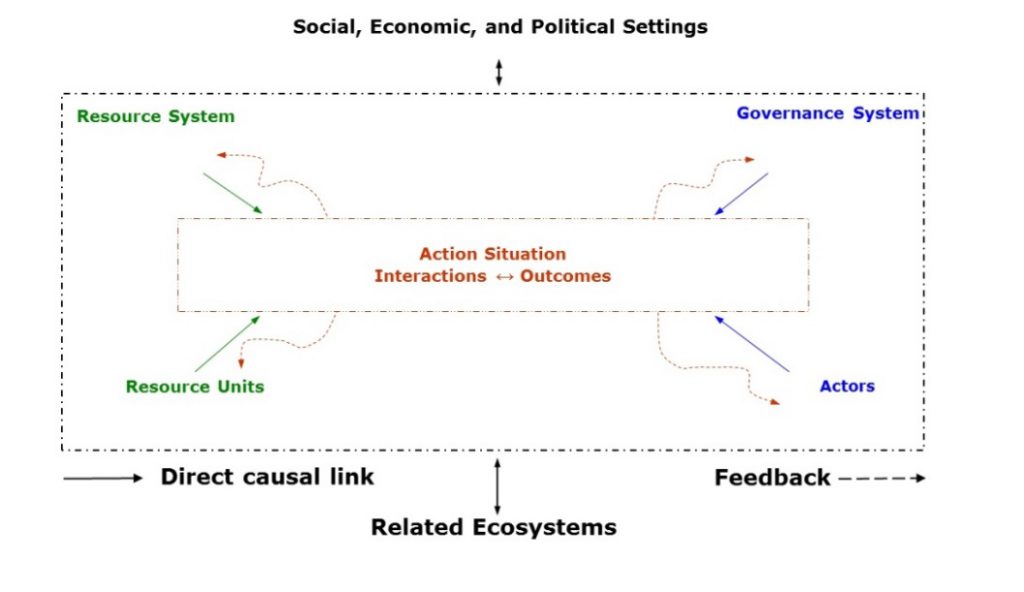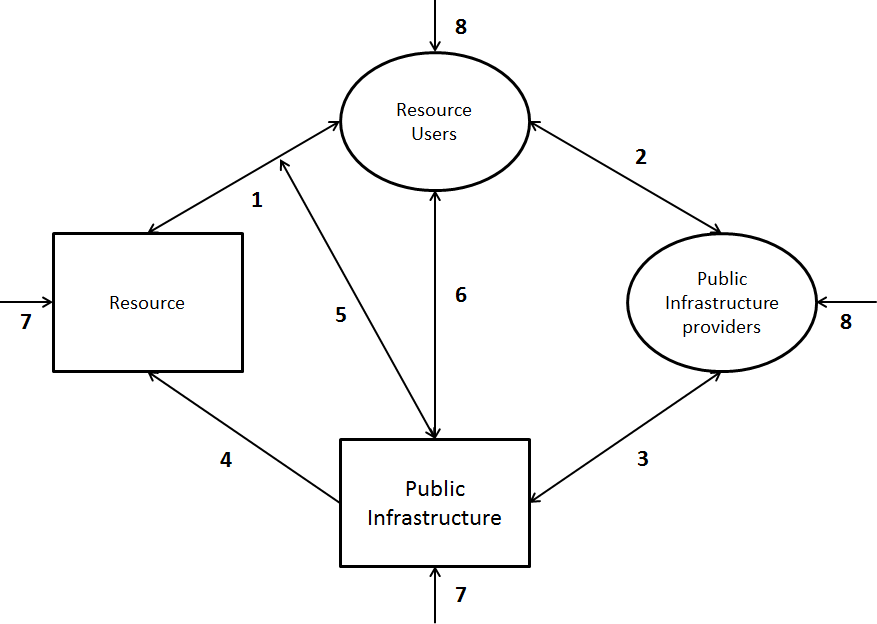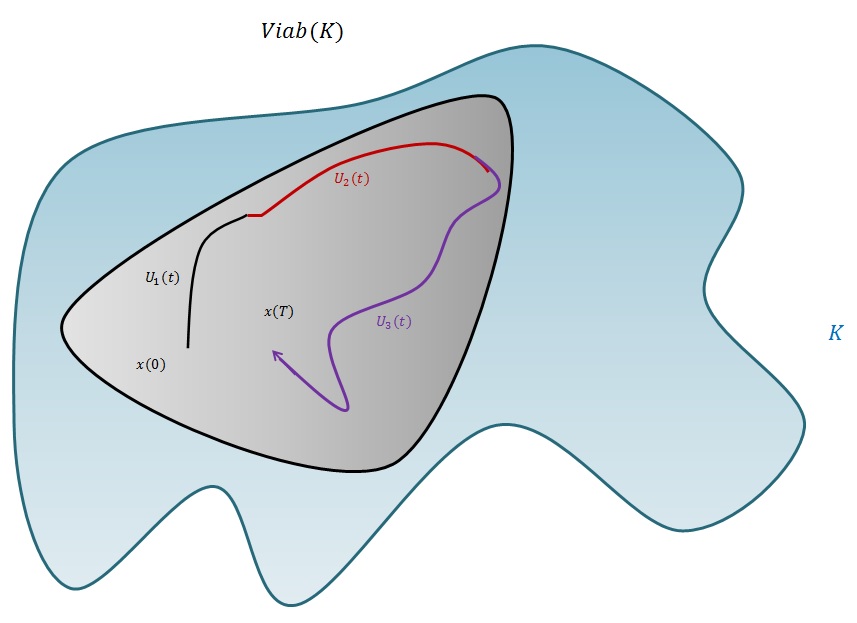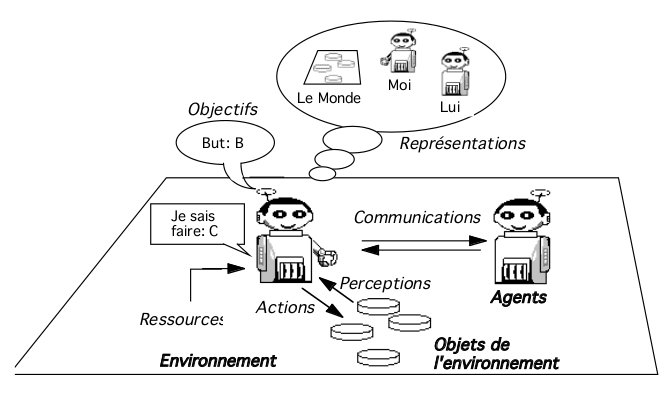Here we will describe methdology used

Analytical frameworks from the institutional economy
Analyzing interactions between ecological and socio-economic components of forest ecosystems or watershed catchments and the consequences on their integrities call for multidisciplinary frameworks that provide a common language to understand emergent pattern of interactions. We present here two frameworks, the SES framework and the robustness framework.
The Social-Ecological System Framework
The SES framework, based on the institutional analysis and development framework (IAD) developed by a noble prize winner Elinor Ostrom, proposes a diagnostic approach which aims to disaggregate environmental issues, identifying elements of individual problems that are significant from a problem-solving perspective and reaching conclusions about design features needed to address each of the elements identified. In this vein, following the aspects of decomposability of complex systems and the idea of integrating ecological and socio-economic context, The SES framework identifies the broad characteristics of Resource System and related Resource Units, Governance Systems, and Actors that together affect the structure of Action Situations leading to Interactions and Outcomes, as well as being embedded in Social, Economic, and Political Settings, and with Related Ecosystems. Within each of these broad structures there are second-tier variables, and frequently, third-, fourth- and fifth-tier variables. This nested hierarchy of variables was not proposed with the intent to suggest that all the variables are relevant for all the cases. Rather analysts might find the SES framework helpful as a diagnostic tool that enables them to define, clearly, variables of interest and organize them into connected groups.

The Robustness Framework
The robustness framework, developed by Marty Anderies, delineates four components of the SES (resource, resource users, public infrastructures, and public infrastructure providers), their interactions, and how these components and interactions influence the capacity of a SES to cope with internal and external disturbances. This framework explicitly recognizes the role of public infrastructures in influencing the system on the component level. Public infrastructure can be either “hard” (e.g. roads and buildings), or “soft” (e.g. formal and informal institutions, rules, social structures) and is typically designed to achieve certain societal output. The robustness framework can be used to 1) provide a systematic way of thinking that focuses on how these different infrastructures interact in terms of the functions they provide that avoids artificial and potentially misleading distinctions between various systems, and 2) recognize and clarify the “configural” nature of the system, i.e. minimal set of infrastructure classes is required before interesting higher-level organizational patterns emerge (i.e. well-being, communities, societies, etc.). When thinking in terms of robustness framework, the question changes from “what is the right policy or set of institutions for a particular problem or context?” to “what infrastructure can we influence that might nudge the system to evolve toward a robust configuration that produces mass and information flows valued by the society?”. The conceptual model of the robustness framework, as introduced by Anderies, specifies four generic components common to most social-ecological systems (resource, resource users, public infrastructure, and public infrastructure providers) and their interactions (Links 1 to 6). It also describes the presence of external disturbances (Links 7 and 8). Boxes reffer to biophysical components of the system while circles reffer to social components.

Operational tools based on mathematical and simulation tools
To study SES, dynamic models can be used to explore interactions. Viability theory and agent-based modeling are well adapted to do this.
Viability Theory
The main purpose of viability theory is to explain the evolution of the state of a control system, governed by nondeterministic dynamics and subjected to viability constraints, to reveal the concealed feedbacks which allow the system to be regulated and provide selection mechanisms for implementing them. It assumes implicitly an “opportunistic” and “conservative” behavior of the system: a behavior which enables the system to keep viable solutions as long as its potential for exploration (or its lack of determinism) — described by the availability of several evolutions — makes possible its regulation.
In a mathematical formulation, given a constraint set in the state space, the viability kernel gathers all states from which there exists at least one control function that governs an evolution which remains in this constrains set.

Agent-based modeling
Agent-based models seems to be well adapted to this domain because they are dynamic tools that can highlight SES interactions and feedback. They are useful for exploring interactions, analyzing SESs or predicting management results. Agent-based models (ABM) are computational systems with autonomous entities (agent) in an environment. Agent have dynamic behavior and heterogeneous characteristics and interact with each other and with the environment. Outcomes at macroscale emerge from these microscale interactions.
